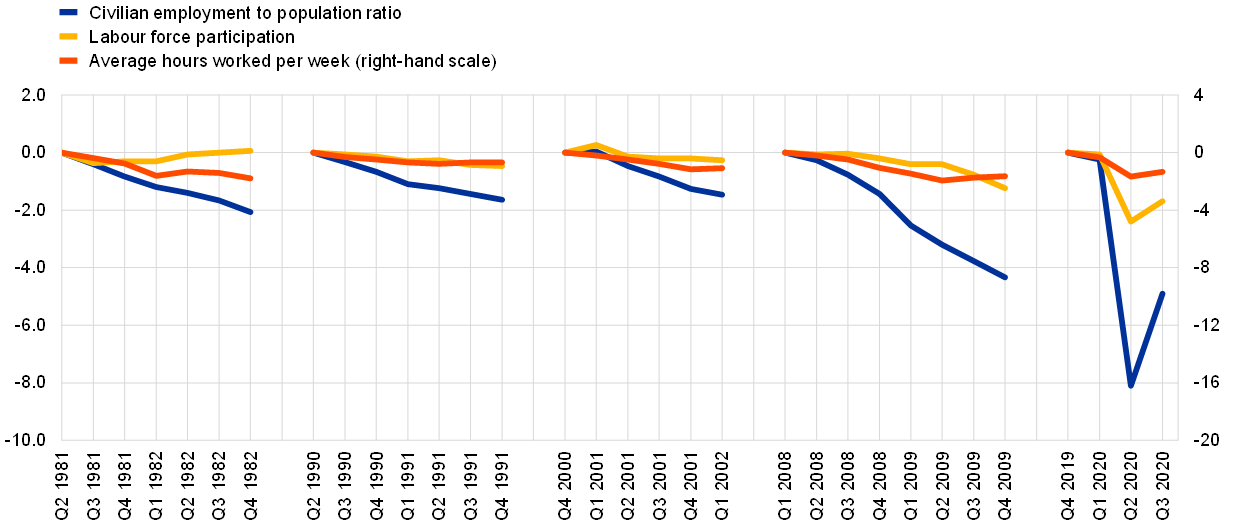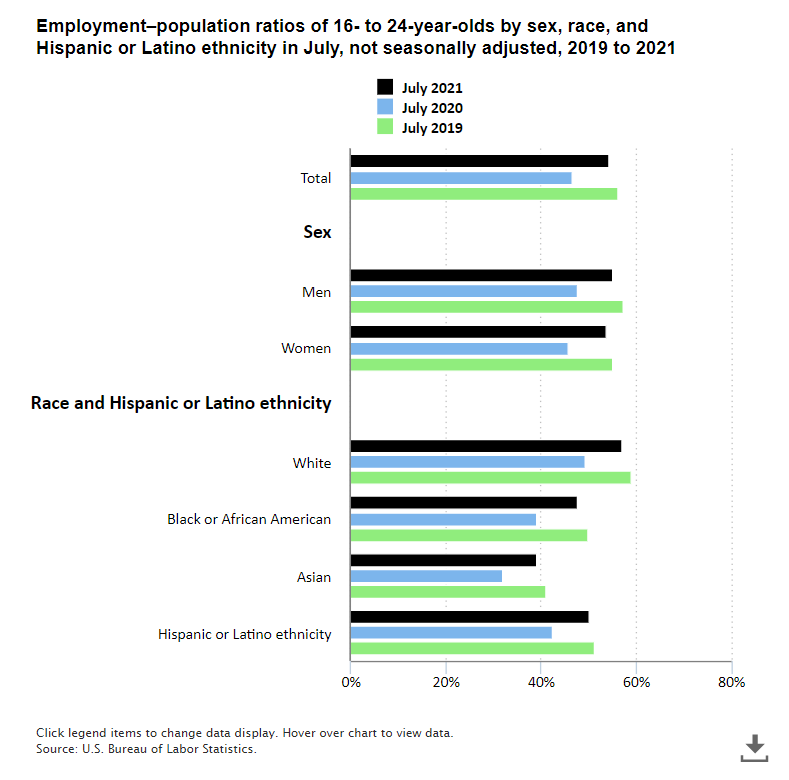What Does The Employment-population Ratio Mean
Definition The employment-to-population ratio is defined as the proportion of a countrys working-age population that is employed. A Employment-Population Ratio Percent Seasonally Adjusted EMRATIO.

The Eu In The World Labour Market Statistics Explained
The employment-population ratio represents the number of employed people as a percentage of the civilian noninstitutional population.
What does the employment-population ratio mean. The ratio of employed persons to the total civilian noninstitutionalized population 16 years old or older. The employment-to-population ratio measures the number of workers currently employed against the total working-age population of a region. As an indicator the employment-to-population ratio provides information on the ability of an economy to create jobs.
Concepts Working-age population is determined on the basis of national circumstances but in most countries the working-age population is defined as persons aged 15. For many countries it ranks in importance with the unemployment rate. For example Japan has an employment rate of 70 of the working age but with an ageing population this is a small of the total population.
A high ratio means that a large proportion of a countrys population is employed while a low ratio means that a large share of the popu lation is not involved directly in market-related activities because they are either unemployed or more likely out of the labour force altogether. Employment endogenous variable. The employment-to-population ratio is defined as the proportion of a countrys working-age population that is employed.
In other words it is the percentage of the population that is currently working. The employment rate as defined by OECD is the employment-to-population ratio the number of people of working age in the population who are employed. Also termed the employment rate the employment-population ratio is used as an alternative indicator of the utilization of labor resources.
They are calculated as the ratio of the employed to the working age population. Where can people find the data. The employment-to-population ratio is defined as the proportion of a countrys working-age population that is employed.
How To Calculate Compa Ratio. Term employment-population ratio Definition. Employment rates are a measure of the extent to which available labour resources people available to work are being used.
The employment-population ratio is calculated as. Compa ratio is a useful metric to have when setting salary levels or negotiating raises and it helps you avoid losing talent to other companies. Standing at 546 percent in June the employment-population ratio shows the percentage of the civilian noninstitutional population that is currently employed.
Employment Population Ratio Another issue is the size of the working age population as a of the total population. The employment-to-population ratio is defined as the proportion of an economys working-age population that is employed. Employment levels measure the total number of people estimated to be in employment while employment rates allow changes in the labour market to be interpreted in a.
Employed Civilian Noninstitutional Population x 100. In other words it is the percentage of the population that is currently working. This measure is the number of employed as a percentage of the civilian noninstitutional population 16 years old and over.
This indicator is expressed as a percentage. Compa Ratio short for comparison ratio is a comparison of the salary you are paying your employees versus the market midpoint for similar positions at other companies. According to the International Labour Organization people are considered employed if theyve had an hour or more in gainful employment in the most recent week.
A high ratio means that a large proportion of a countrys population is employed while a low ratio means that a large share of the population is not involved directly in market-related activities because they are. The Bureau of Labor Statistics BLS defines the employment-population ratio as the ratio of total civilian employment to the civilian noninstitutional population. The employment-population ratio.
1 Simply put it is the portion of the adult population 16 years and older that is employed.

Concentration Ratio Vs Herfindahl Hirschman Index Market Structure Microeconomics Concentration Sales And Marketing Basic Concepts

Demand Curve What Is Demand Law Of Demand Basic Concepts

Image Result For Labor Force Participation Rate Definition Participation Rate Forced Labor Participation

Employment Hysteresis From The Great Recession Journal Of Political Economy Vol 127 No 5
26 Charts That Show How Systemic Racism Is In The Us

The Impact Of The Covid 19 Pandemic On The Euro Area Labour Market

World Indicators Of Skills For Employment Wise New Oecd Database Business Skills Skills Career Development

Why Hasn T The Us Homeownership Rate Recovered Economics Poster Economics Lessons Love Photos

Total Comprehensive Income Astra Agro Lestari Tbk 2017 2018 Financial Statements Accounting Income Financial Statement Basic Concepts

The Us Employment Population Ratio Rose Even As The Labour Participation Rate Fell In February Pay Off Mortgage Early Mortgage Finance Blog

Calculating The Unemployment Rate Macroeconomics

Pin Di Basic Concepts In Economic Business And Finance

Labor Market Labour Market Marketing Profitable Business

Labor Force Participation Rate Formula Participation Rate Forced Labor Aging Population

Love This Local Seo Roadmap It S Really Useful For Webmasters And Bloggers Affiliate Marketers Etc Local Seo Learn Affiliate Marketing Seo

Retiring Baby Boomers Contribute To The Falling Labour Force Participation Rate Participation Rate Forced Labor Participation



Post a Comment for "What Does The Employment-population Ratio Mean"